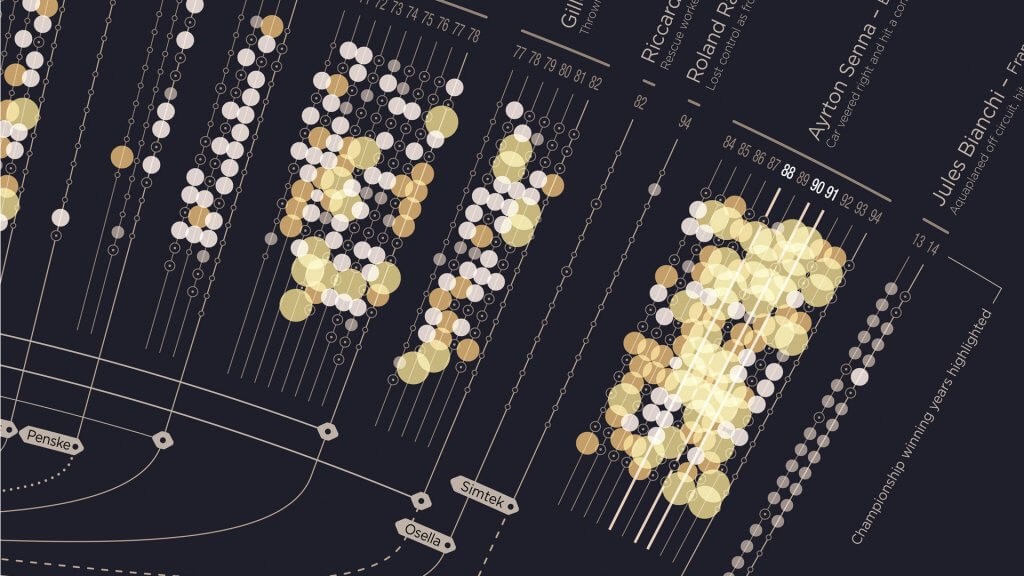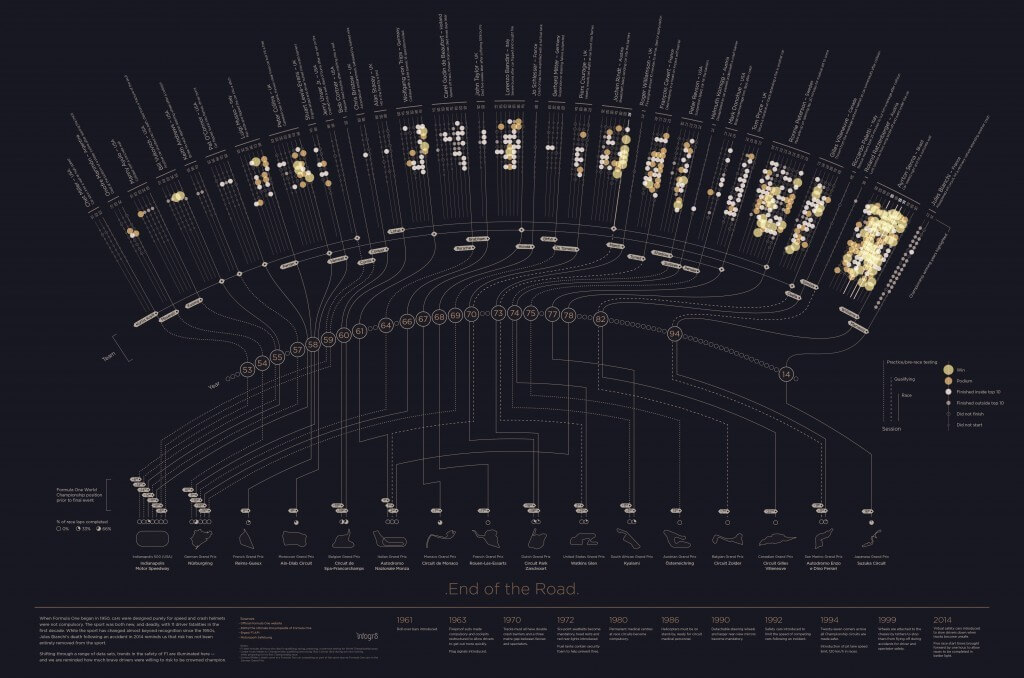 Insight Visualising driver safety 30 years after Senna
Insight Visualising driver safety 30 years after Senna
This month marks the 30th anniversary of Formula 1 champion Ayrton Senna’s tragic death during the 1994 San Marino Grand Prix.
Since then, driver safety and the sport’s ecosystem have dramatically improved, as shown in our data visualisation charting car safety from 1950 to today, published by ESPN.

In the early days of Formula One, cars prioritised speed over safety, and helmets were not mandatory. The sport was immensely dangerous, with 11 driver fatalities in the first decade.

Explore the data visualisation in full here.
Our data illuminates trends in F1 safety and highlights the bravery of drivers striving to become champions. Although Formula One has evolved significantly, Jules Bianchi’s death in 2014 reminded us that risk still exists in the sport.
Similarly, road safety on UK public roads has also seen substantial improvement. In the early 1990s, there were around 4,000 annual deaths, which dropped to 1,850 by 2010.
Looking ahead, self-driving cars could mark the next era of road safety, but there are still concerns and challenges to address. Tech giant Apple’s ‘Project Titan’ has apparently been axed, and question marks remain over how a transition to driverless cars could be made to work. Would the tech be used ubiquitously, or would it be better rolled out selectively for certain use cases?
In the EU, this detailed paper outlines 20 key recommendations around the ethics of connected and autonomous vehicles (or CAVs for short).
Ultimately, if AI and related technologies can eliminate mistakes, they have the potential to make our roads even safer. And it will be up to the data to build trust and drive change by telling that story.
For more on the ESPN project, that’s here.

